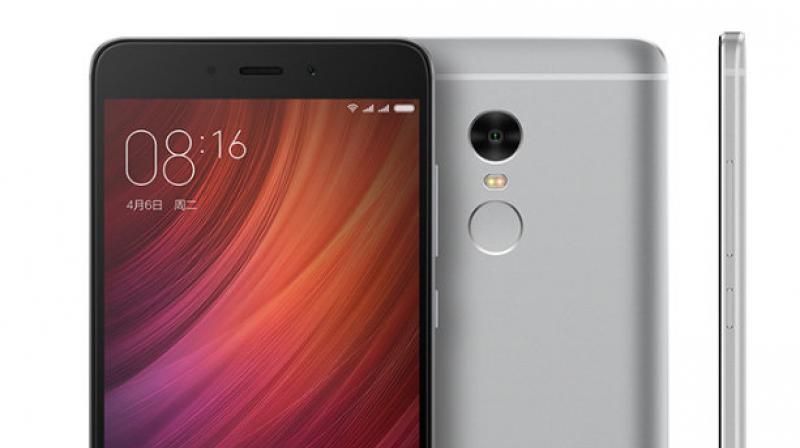How much has the mid-range smartphone evolved in 2017?
With decent hardware, great build and respectable software, a mid range smartphone is easily all the smartphone you need.

The world of technology is on an evolutionary cycle faster than all things created naturally. We have gone beyond the moon and are claiming to be the first beings to be present on Saturn and its moons. On the blue planet, the giant radio sets of yesteryears gave way to cloud-based music streaming services in a matter of just over two decades. The Internet has replaced the newspaper and TV to become the quickest source of news and information. Telephones have given way to swanky smartphones with intelligent artificial intelligence interfaces to make our communication process convenient.
In the realm of smartphones, the swanky flagship smartphones have the responsibility to bring the latest technological concepts to the smartphone fraternity. However, there’s a price to pay for those newer concepts which may be beyond the reach of the common man. This is why there are cheaper smartphones that skip on the fancy bells and whistles to provide the basic technological necessities of the 21st century at a price that everyone can afford.
For the affordable category, the mid-range smartphones are the ones that form the support system of the smartphone industry in 2017. Buying a mid-range smartphone these days provides a satisfactory smartphone experience pretty close to one provided by a flagship device. However, things were not that good a few years ago.
 A mid-range smartphone initially offered old specifications with an unimpressive build quality.
A mid-range smartphone initially offered old specifications with an unimpressive build quality.
When the concept of smartphone caught up with the Indian middle class in 2012, manufacturers had selected a number of models on offer in the mid-range category. Mid-range smartphones like Samsung’s Galaxy Grand series and HTC’s Desire series focussed mainly on selected parameters – a bigger screen, a rear camera with a large megapixel count, highly bloated software and some fancy advertising. The phones were incapable of handling the ambitious software that the manufacturers wanted to run, despite providing a weak hardware.
Even with Motorola’s Moto G, which was regarded as the smartphone that revolutionised the mid-range category, the idea that manufacturers developed was to provide an ‘enhanced minimalistic experience’ on a limited budget. Although the smartphone provided a stock Android experience, the hardware was still several notches below than its flagship counterparts. Despite that, the smartphone sold in large numbers and gave a message to the world that consumers looking for a mid-range smartphone care about specifications that lead to an overall good smartphone experience.
This idea attracted the hoards of Chinese smartphone manufacturers, who had the means to provide more for less – thanks to lower manufacturing costs and clever marketing tactics. Therefore, when Xiaomi decided to make an entry into the Indian market, they knew what the Indian consumer was asking for – good specifications, respectable build quality and a decent user experience. Their first smartphone, the Xiaomi Mi 3, delivered exactly that – flagship specifications with an enhanced User Interface (UI) in a well-built body. The device was an instant hit, with people blaming the company for bringing such short volumes.
 The smartphone that brought the mid-range revolution.
The smartphone that brought the mid-range revolution.
After a few similar releases, the company ditched bringing old flagship technology to mid-range smartphones and instead started using the latest chipsets from Qualcomm’s performance focussed mid-range Snapdragon series. The build quality also became the focus, aiming for an experience more akin to the flagship smartphones. That found favour with the Indian consumer as well, with their Redmi Note 4G, Mi 4i and Redmi Note 3 gathering massive success.
 One of the most popular mid-range smartphones till date – the Xiaomi Redmi Note 3.
One of the most popular mid-range smartphones till date – the Xiaomi Redmi Note 3.
The old players have also started following the suit of packing latest technology with a premium build quality. That is why the mid-range smartphone market is now full of devices that focus on a great overall experience. There are more options available in this segment for various kinds of smartphone seekers. For example, the Xiaomi Redmi Note 4 focuses on specifications and performance, the Moto G5 Plus wants to provide a stock Android experience in a premium build, the Honor 8 Lite focuses on style with glass-metal body, Samsung Galaxy J7 Max focuses on a big display with great viewing experience and the Samsung Galaxy J7 Pro brings flagship class design to the mid-range category.
 The Honor 8 Lite focuses on a premium build inspired from the flagship class.
The Honor 8 Lite focuses on a premium build inspired from the flagship class.
In a nutshell, the mid-range category has matured for meeting the growing needs of the modern smartphone consumer. It is no more a collection of plastic shells with weak internals and clumsy user experience but a category for the sensible consumer who wants a smartphone designed for his/her specific needs without burning a hole in the pocket.
(Source)

